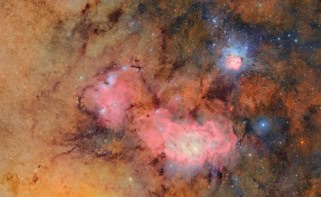
The list of conditions required for complex life to emerge on Earth is contentious, poorly understood, and one item longer than it used to be. According to an international team of geoscientists, an unusual lull in the Earth’s magnetic field nearly 600 million years ago may have triggered a rise in the planet’s oxygen levels, thereby allowing large, complex animals to evolve and thrive for the first time. Though evidence for the link is circumstantial, the team says that new measurements of magnetization in 591-million-year-old rocks suggest an important connection between processes occurring deep within the Earth and the appearance of life on its surface.
Scientists believe that the Earth’s magnetic field – including the bubble-like magnetosphere that shields us from the solar wind – stems from a dynamo effect created by molten metal moving inside the planet’s outer core. The strength of this field varies, and between 591 and 565 million years ago, it was almost 30 times weaker than it is today. Indeed, researchers think that in these years, which lie within the geological Ediacaran Period, the field dropped to its lowest-ever point.
Early in the Ediacaran, life on Earth was limited to small, soft-bodied organisms. Between 575 and 565 million years ago, however, fossil records show that lifeforms became significantly larger, more complex and mobile. While previous studies linked this change to an increase in atmospheric and oceanic oxygen levels that occurred around the same time, the cause of this increase was not known.
Weak magnetic field allowed more hydrogen gas to escape
In the latest study, which is published in Communications Earth & Environment, researchers led by geophysicist John Tarduno of the University of Rochester, US, present a hypothesis that links these two phenomena. The weak magnetic field, they argue, could have allowed more hydrogen gas to escape from the atmosphere into space, resulting in a net increase in the percentage of oxygen in the atmosphere and oceans. This, in turn, allowed larger, more oxygen-hungry animals to emerge.
To quantify the drop in Earth’s magnetic field, the team used a technique known as single-crystal paleointensity that Tarduno and colleagues invented 25 years ago and later refined. This technique enabled them to measure the magnetization of feldspar plagioclase crystals from a 591-million-year-old rock formation in Passo da Fabiana Gabbros, Brazil. These crystals are common in the Earth’s crust and contain minute magnetic inclusions that record, with high fidelity, the intensity of the Earth’s magnetic field at the time they crystallized. They also preserve accurate values of magnetic field strength for billions of years.

Tarduno says it was challenging to find rock formations that would have cooled slowly enough to yield a representative average for the magnetic field, and that also contained crystals suitable for paleointensity analyses. “We were able to find these in Brazil, aided by our colleagues at Universidade Federal do Rio Grande do Sul,” he says.
The team mounted the samples in quartz holders (which had negligible magnetic moments) and measured their magnetism using a DC SQUID magnetometer at Rochester. This instrument is composed of high-resolution sensing coils housed in a magnetically shielded room with an ambient field of less 200 nT.
Geodynamo remained ultra-weak for at least 26 million years
The team compared its results to those from previous studies of 565-million-year-old anorthosite rocks from the Sept Îles Mafic Intrusive Suite in Quebec, Canada, which also contain feldspar plagioclase crystals. Together, these measurements suggest that the Earth’s geodynamo remained ultra-weak, with a time-averaged field intensity of less than 0.8 × 1022 A m2, for least 26 million years. “This timespan allowed the oxygenation of the atmosphere and oceans to cross a threshold that in turn helped the Ediacaran radiation of animal life,” Tarduno says. “If this is true, it would represent a profound connection between the deep Earth and life. This history could also have implications for the search for life elsewhere.”

Last reversal of the Earth’s magnetic field took twice as long as previously thought
The researchers say they need additional records of geomagnetic field strength throughout the Ediacaran, plus the Cryogenian (720 to 635 million years ago) and Cambrian (538.8 to 485.4 million years ago) Periods that bookend it, to better constrain the duration of the ultralow magnetic fields. “This is crucial for understanding how much hydrogen could be lost from the atmosphere to space, ultimately resulting in the increased oxygenation,” Tarduno tells Physics World.



